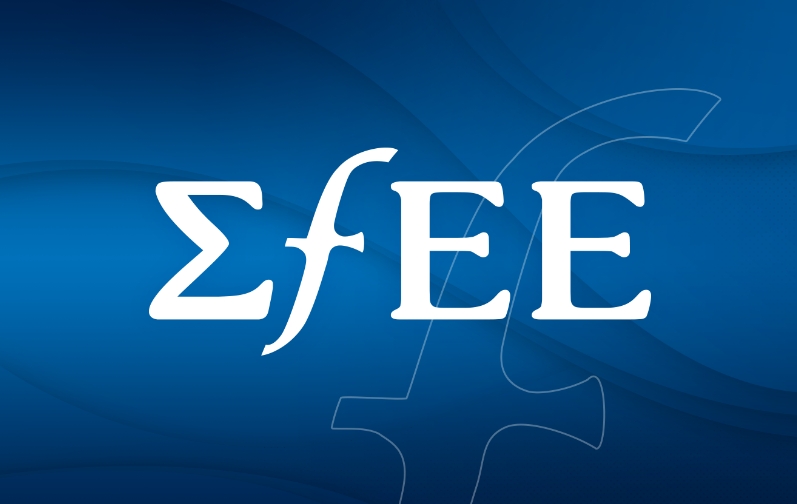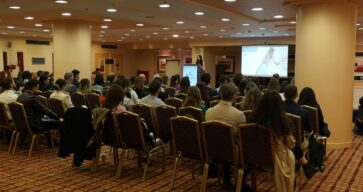“The pharmaceutical market in Greece: Facts and figures 2018” Numbers show that we have exited the MoUs, but not the crisis



SFEE-IOBE Press Release
“The pharmaceutical market in Greece: Facts and figures 2018”
Numbers show that we have exited the MoUs, but not the crisis
Athens, 22.04.2019– Today, the Foundation for Economic and Industrial Research (IOBE), jointly with the Hellenic Association of Pharmaceutical Companies, held a press conference to present its publication “The Greek pharmaceutical market: Facts and figures 2018”, together with the key conclusions of its study “The contribution of the pharmaceutical industry to the Greek economy”.
The annual report “The Greek pharmaceutical market: Facts and figures 2018” reviews the main data, developments and trends in the area of pharmaceuticals and healthcare in general, in Greece and in Europe. The focus is on the structure and performance of the industry.
This year’s report highlights the serious demographic problem faced by Greece, as the number of births has been declining (down by 36 thousand in 2017) and population aged over 65 is projected to rise from 21.9% of total population in 2017 to 36.5% by 2050. It also points out the growing needs for medical and pharmaceutical care, also implying a higher need for public funding for health care and pharmaceutical coverage. The private sector’s contribution has increased in recent years, but is unlikely to be sustained at high levels in a context of long-term unemployment and reduced income of Greek citizens.
Regarding pharmaceutical care expenditure, which however represents a small percentage (about 20%) of overall healthcare expenditure, total outpatient pharmaceutical expenditure in Greece came to EUR 3.6 billion in 2018 (of which just EUR 1.945 million is publicly funded). At the same time, the burden has been shifted to patients and the private sector, with the pharmaceutical industry bearing the brunt through the claw-back and rebates it pays.
Despite the significant impact of fiscal adjustment on public funding, the pharmaceutical industry has continued to spend substantial amounts on R&D, accounting for 8% of total private R&D expenditure in Greece (2015). Also, 2,506 clinical trials of any type and phase were conducted (1,434 completed) until 2018. Pharmaceutical output in value terms stood at EUR 954 million in 2017, and value added at EUR 668 million (a share of 3.0% in total manufacturing value added). The pharmaceutical industry employed 14.4 thousand people in 2017, 60.5% of whom were university graduates. Also important is the role of the industry in foreign trade, with pharmaceutical exports amounting to EUR 1.4 billion in 2018 and accounting for 4.3% of total Greek exports of goods for that year.
IOBE also assessed the economic footprint of the pharmaceutical industry in the Greek economy. According to its estimates, the industry contributed EUR 6.1 billion (3.4%) to Greek GDP in 2017. Thus, for every euro of value added in the industry, another EUR 2.9 is created in the Greek economy as a whole. Turning to employment, the industry’s overall contribution is estimated at 122 thousand jobs (or 3.0% of total employment). This means that each job in the pharmaceutical industry supports another 4.7 full-time equivalent jobs in the economy as a whole. Finally, the impact on tax revenues from the activity of the pharmaceutical industry is estimated at about EUR 1.7 billion.
In his address, SFEE President Mr. Olympios Papadimitriou noted that, despite the end of the adjustment programmes under the MoUs, austerity in the health sector continues, and the logic of closed-end pharmaceutical budgets is, by legislation, extended until 2022, which further deteriorates the operating conditions and prospects of the industry in the country. Mr Papadimitriou went on to express the strong concern of the industry for the current year: “Although, so far, the heavy claw-back and rebates paid by the pharmaceutical industry to the state (for the years 2012-2018, these came to a total of EUR 5.3 billion!) do not seem to have affected patients’ access to their treatments, this is unlikely to continue to be so in the future, given the very bleak projections for the current and the next years. For the first two months of this year alone (January-February 2019), EOPYY claw-back is 16% higher than for the corresponding two-month period of 2018! The introduction of new innovative treatments in the country has become challenging, and the risk cannot be precluded that market supply shortages might emerge also for well-established and widely-used treatments.” In closing, SFEE President stated: “With the current situation, future planning is absolutely impossible and the train of growth is increasingly difficult to catch. We have exited the MoUs, but not the crisis”.
The report and the relevant presentations are available on the websites of IOBE (www.iobe.gr) and SFEE (www.sfee.gr)
For more information:
Maria Leontari, SFEE Communications Officer, 2106821040, [email protected]
Nancy Roussia, Head of IOBE Press Office, 2109211200-10, [email protected]
See the press release
See the presentation of the publication



